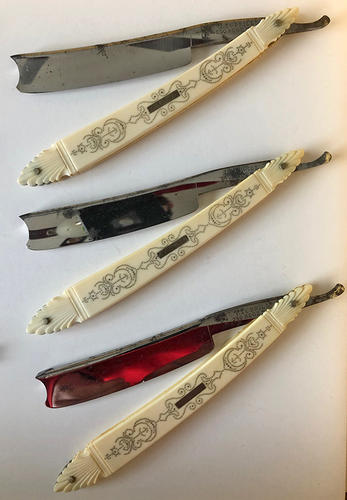Sure thing. I snapped these kinda hastily, so sorry for the reflections in the blades.
First up a pic of the set of three together. At one time there was a 4th. The plate of one razor is etched "No.1". The reverse scales of the others are inscribed respectively with the numbers 3 and 4. By the time this set came to me, razor #2 and the dressing case that they all originally came in were long gone. Shame, as that must have been an incredibly well appointed and stunning dressing case.

Up next is a closer shot of the pin inlay. A while back out of curiosity I opened a macro shot in Photoshop and counted the pins, crossing out each one as I went so as not to miss or double count any. There are 614 pins in each of the handles. It's also kind of fun having the three identical examples side by side because it makes clear the use of a stencil to execute the pattern. There are a couple of spots where one pin is just slightly out of line with the others, and those little blips reoccur in the exact same place on all three handles.
